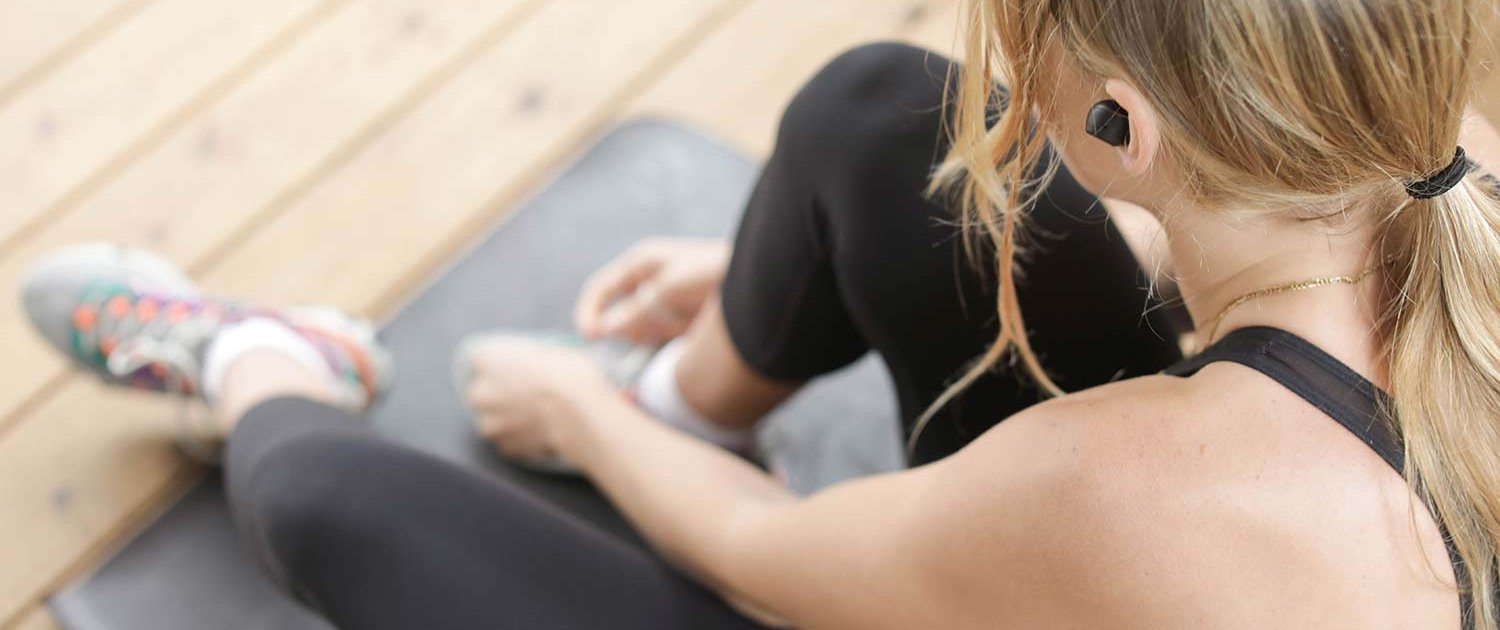New conditions, new priorities
The COVID-19 crisis has changed how we exercise, and the effects will last far longer than this pandemic. Becoming more self-sufficient and resilient is becoming a priority for everyone, whether it’s because of coronavirus restrictions, wildfires, poor air quality, or simply to withstand the pressures and demands of life, work and family responsibilities.
One of the biggest shifts has been for those who felt that gyms were a necessity for their fitness success. The racks of shiny dumbbells and kettlebells, the rows of cardio machines that simulate all manner of “real world” movements like cycling or stair climbing, the camaraderie of fellow exercisers or the expertise and watchful eyes of coaches are all unavailable. If they are, they are at very limited capacity and to be honest, not many of us are going to be comfortable breathing heavily and touching things around other people doing that very same thing, in an enclosed space. According to a RunRepeat survey and report, almost 50% of gym users do not intend to return. So here we are at home, with just ourselves and our willpower to combat distractions like laundry, cleaning, or homework projects for the remote learners in the family. Many fitness die-hards have had to shed hardcore mindsets espousing statements like “all or nothing” or “just do it” to “just do something”!
Getting back to basics
Some of us panic-bought dumbbells or high-tech home gym equipment, but many of us also found ourselves going back to the most basic, fundamental option: Using our own body and the environment to exercise. We began walking, jogging, hiking, or engaging in gentler forms of exercise like yoga or pilates. Exercising at home or in your immediate environment has incredible advantages. Accessibility is immediate, and the costs can be a lot lower. Maybe not if you go for a $4000 stationary bike, but there are dozens of options that cost in the low $100s and even as low as $5 for simple, versatile tools like rubber exercise bands.
A wealth of options to choose from
The next step is to decide what equipment you need. The good news is that there are a great many reasonably priced and adaptable options on the market. But before you head over to Amazon, PerformBetter or Nextdoor and Craigslist, here’s 4 factors to consider first:
- Capability level
- Goals and interests
- Available space
- Budget
We’ll start with capability level, and suggest options that accommodate as many goals as possible, use minimal space, and are as low cost as possible.
Beginners and light exercisers
If your goals are general fitness, weight management, muscle tone and flexibility, then a minimum could be an aerobic step (like a Reebok step), several sets of dumbbells — a heavier set for squats and lunges and a lighter set for overhead and side lifts, a fitness ball, a TRX suspension trainer, and an exercise mat. You could add resistance bands and tubes for variety and you will have a well rounded setup that will give you variety and flexibility for a few hundred dollars. Depending on space and budget, an adjustable bench combined with dumbbells and other equipment adds a lot of options. Aerobic exercise equipment such as treadmills, rowers, and stationary bikes are always good options if you have the space and get hold of them for a reasonable amount.
Intermediate exercisers
Intermediate exercisers can benefit from everything in the beginners section plus adding tools like more free weights, kettlebells, medicine balls, or balance challenging tools like BOSUs or disc pillows.
If you start to get into more serious muscle development and strength training you will simply need more weight, which usually means more money and space is also needed. An exception to the space issue is kettlebells. You can operate kettlebells for strength training in a small space, and you don’t have all the long bars, plates or racks that barbells sets require. More complete set of dumbbells and barbells and plates and an exercise bench and barbell rack of good quality could often be found pre-pandemic for $1000, but can be harder to find now.
Advanced exercisers
Any of the tools listed already can simply be applied in more challenging and complex ways for advanced exercisers. The TRX can is a great example of that. Combinations can add the necessary challenge, like doing a single leg squat on TRX with your foot on a BOSU.
At some point people training intensely for performance in strength will need a gym, with a lot of equipment and other people to help them train safely like trainers and spotters. You might be able to recruit a partner or child who is old enough to train with you, but trying to simulate what was the typical gym setting can get expensive and requires a significant amount of dedicated space that can’t be used for anything else. I’ll talk more later about how to include other people in your home into your exercise routine.
Safety and effectiveness requires good guidance
For safety purposes and getting the most out of all your workouts, make sure you are adequately educated in all the equipment and techniques you intend to use. This is true for beginners to advanced exercisers. There will be some things you can learn from videos, blog posts or apps, but getting attention from a good personal trainer, movement coach or other kinds of specialized fitness coach can be a great investment in yourself as well.
Besides doing exercises correctly and safely for your body, think about external factors. We need to generally ensure our own safety while training at home. Give yourself enough room to work in, consider what is in the space nearby if you had a fall or needed to stop yourself from falling, keep the space clear of obstructions or tripping hazards, and make sure you can get help if needed.
As always, I’m here to help you stay safe, healthy and adapt to whatever life brings our way.
More Resources
Here’s a couple interesting articles from the Very Well Fit blog.:
Gyms Reopening After Coronavirus: 50% of Members Won’t Return



